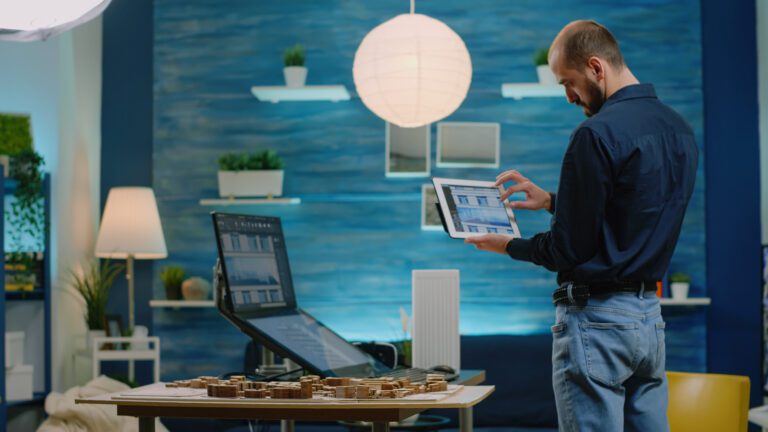Augmented Reality (AR) has transformed our industries into more efficient ways. Compared to traditional methods, on-site technical support has evolved due to emerging AR tools that offer efficiency and key capabilities. AR allows technicians to work smart and safely by leveraging digital content into the physical world. This blog will explain five ways in which AR is revolutionizing on-site technician support.
5 Ways Augmented Reality is Transforming On-Site Technician Support
1. Enhanced Real-Time Remote Assistance
The primary advantage of AR in on-site technician support is its ability to deliver real-time remote assistance. Technicians often face challenges while dealing with complex machinery or systems that require expertise beyond their immediate expertise. AR platforms, like Microsoft’s HoloLens or TeamViewer Pilot, allow remote experts to guide technicians by overlaying instructions directly onto the equipment they are working on.
For example, a study by PwC indicates that 42% of companies have adopted AR in training programs, revolutionizing their learning strategies. This technology reduces the need for expensive expert travel and minimizes equipment downtime, leading to significant cost savings.
2. Interactive Step-by-Step Instructions
Traditional manuals and guides can be cumbersome and often result in mistakes due to misinterpretation or complexity. Augmented Reality (AR) can replace these static manuals with interactive, step-by-step instructions displayed directly on the equipment being serviced. Technicians can access animated sequences, part labels, and assembly directions without looking away at a separate screen or printed document.
For example, a technician working on an HVAC system can utilize an AR app to see the internal structure, helping them navigate each step of disassembly and repair without any guesswork.
3. Faster Diagnostics and Problem Solving
Finding the root cause of a technical problem can take a lot of time, especially with complex machinery. AR speeds up the diagnostics process by displaying sensor data, error codes, and visual indicators on the equipment. This instant access to relevant information enables technicians to make informed decisions without wasting time on manual diagnostics.
Capgemini‘s immersive smart service solution highlights that AR can assist technicians in resolving issues more efficiently, ideally during a single visit, by utilizing remote diagnostics and smart preparation.
4. Hands-Free Access to Technical Information
Accessing technical information can be challenging when juggling manuals, laptops, or tablets. AR-enabled smart glasses or headsets allow technicians to access essential information without interrupting their workflow.
For example, devices such as the Vuzix Blade and RealWear HMT-1 come equipped with voice-activated controls and heads-up displays, ensuring that vital information is always in the technician’s line of sight. This feature improves safety and efficiency, particularly in risky environments.
5. Augmented Training and Skill Development
Augmented Reality (AR) transforms technical training by offering immersive learning experiences replicating real-world situations. In contrast to traditional classroom training, AR simulations allow trainees to practice repair and maintenance tasks in a virtual environment, which reduces costly equipment and risks.
For example, a trainee learning to service automotive engines can utilize AR to practice assembling and dissembling components, receiving immediate feedback on errors.
Conclusion
Augmented Reality is changing how on-site technicians receive support by providing improved remote assistance, offering interactive instructions that provide easy access to information, and transforming training methods. Companies that implement AR tools can expect to see boosts in productivity, cost savings, and better safety results.





